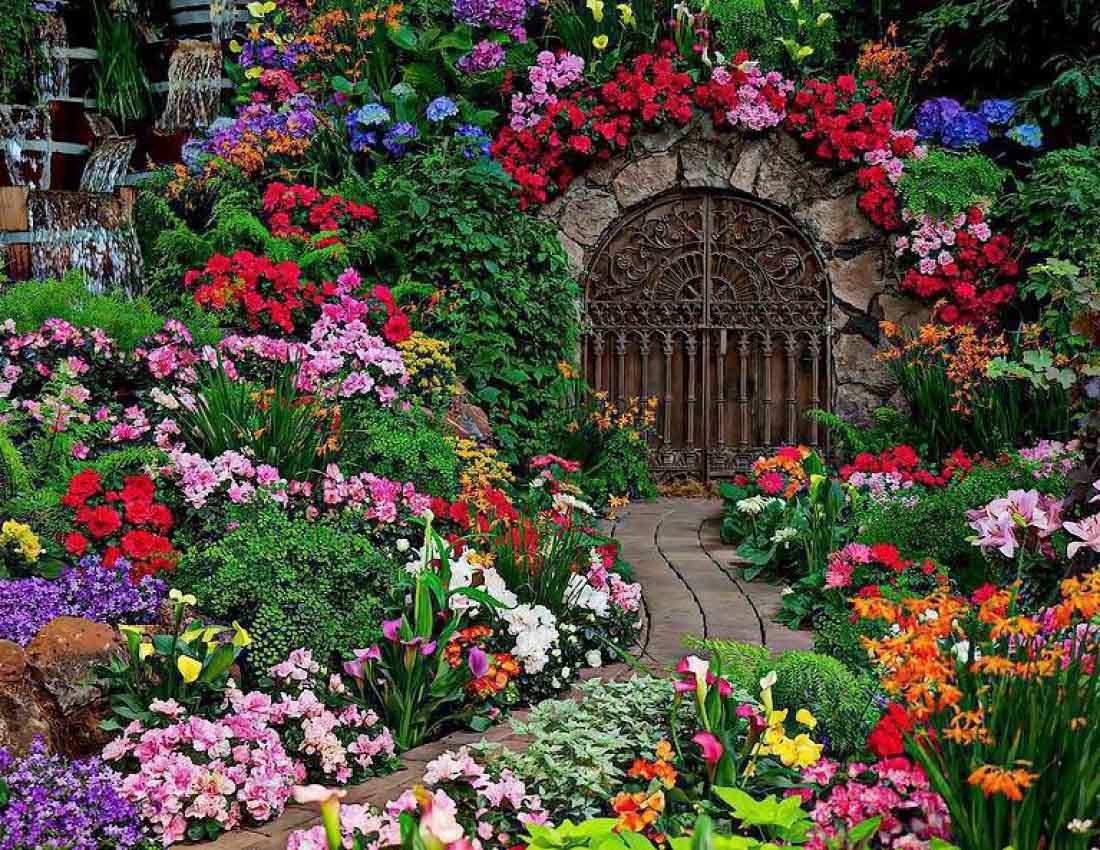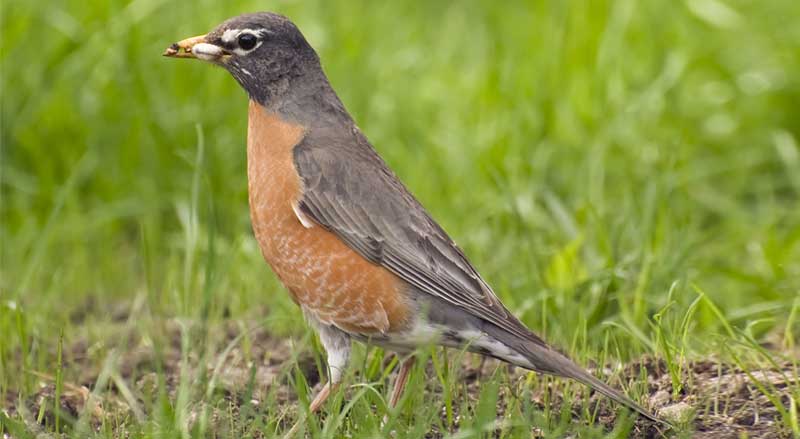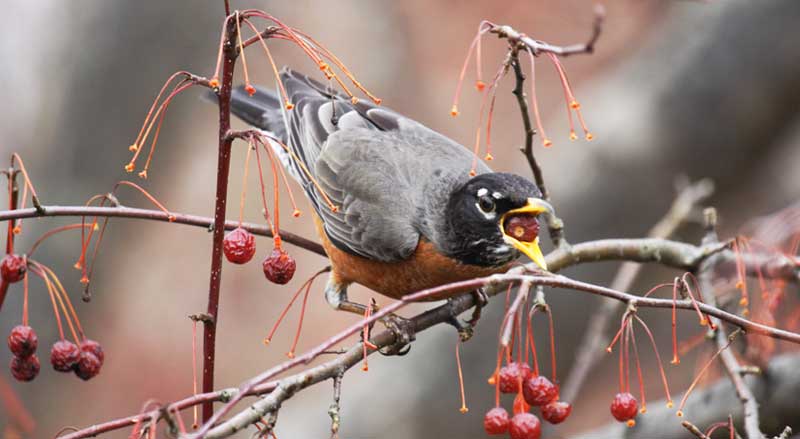One of the best ways to create a vibrant, easy-to-care-for landscape is by using native NJ plants and trees. Not only will your home or office look great, but you will be helping the environment and saving money, too!
Why Native Plant Species?
Native plant species have developed over time to thrive in their natural environment. They generally need much less special tending than non-native plant species which may require additional soil treatments, water, and other aids to growth.
Native NJ plants adapt well to your garden and are easy to use in landscape designs. These plants have adjusted to the local climate and wildlife. This means that heat, droughts, and insects in the region are less likely to affect your plants.
Native NJ plants also have the benefit of attracting regional wildlife. Some of these New Jersey native plants provide food to local birds and butterflies.
New Jersey Native Plants to Consider
If you already have a landscape design you love, you can look for ways to replace any non-native species with similar New Jersey’s native plants. Here are some plants you might want to consider:
NJ Perennials and Flowering Plants
False Sunflowers (Heliopsis helianthoides)
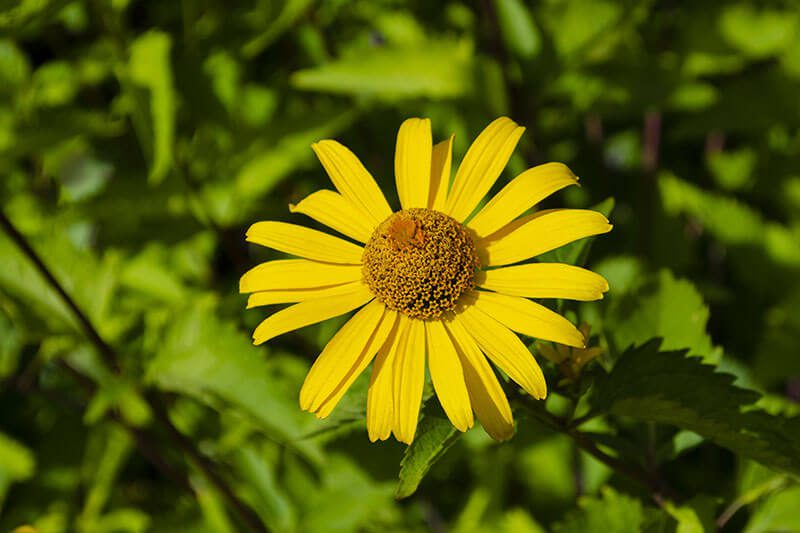
False Sunflowers are perennial sunflowers that grow best from summer to mid-fall. They grow well in gardens with full sun. The false sunflower reaches about 3 feet tall and produces yellow flowers. It grows well in dry to moist soils.
When false sunflowers bloom, they attract butterflies. They are often used for natural woodland gardens and borders.
Pink Tickseed (Coreopsis rosea)
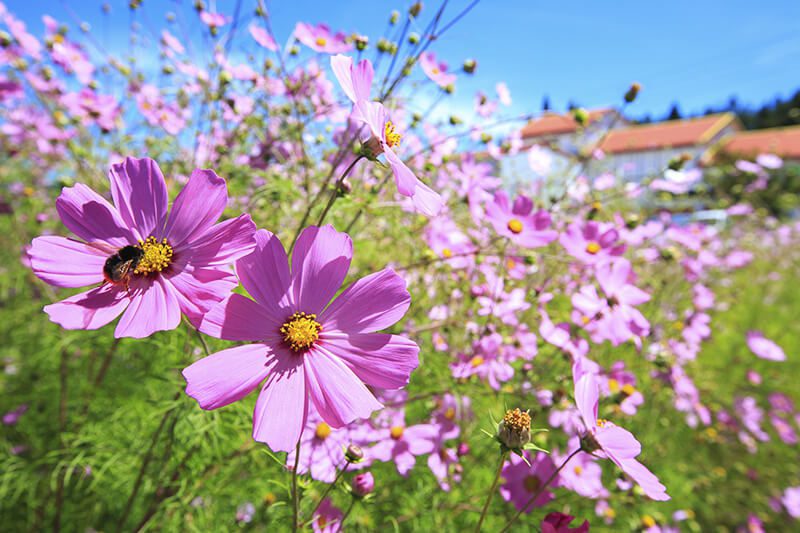
Pink tickseed is a perennial that blooms in the summer and produces dozens of pink daisies. It grows best in full sun and well-drained soil. Pink tickseed will grow 1-2 feet high and has narrow leaves.
This plant flowers from mid-summer to fall. It is not drought tolerant and must be watered regularly. Pink Tickseeds are easy to maintain and can be planted in all types of gardens or landscapes.
Mistflower (Conoclinium coelestinum)
Mistflower is a late-blooming summer flower that blooms from August to October. It grows 18 to 36 inches and propagates by rhizomes. Rhizomes are a continuously growing horizontal underground stem that puts out lateral shoots and adventitious roots at intervals.
The Mistflower likes full sun to light shade and grows well in moist or wet soil. This New Jersey native plant attracts butterflies and its blue-purple flowers look showy in the fall. It goes well in natural and formal landscapes.
White Turtlehead (Chelone glabra)
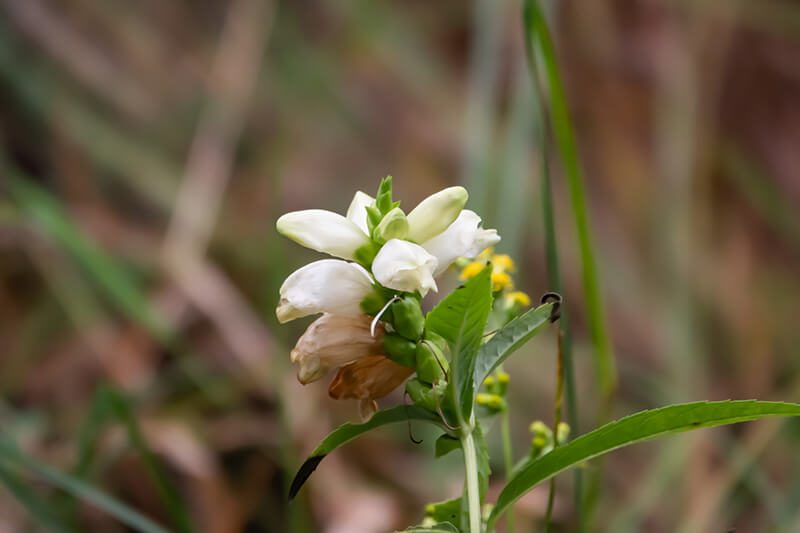
White Turtlehead is a tall perennial with white to pink blossoms. This native plant makes an excellent alternative to Oriental lilies. Turtlehead is also a favorite of many local butterfly species.
Purple Coneflower (Echinacea purpurea)
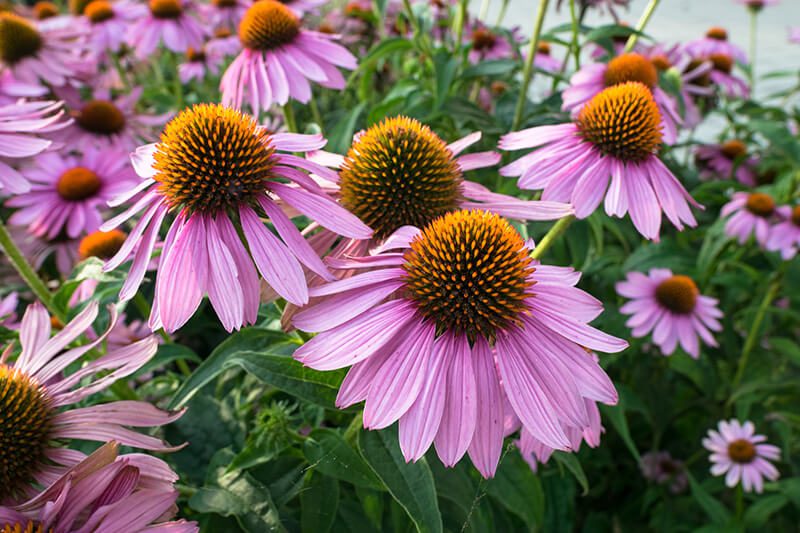
Purple Coneflower is a colorful, butterfly-friendly addition to a native flower garden. A tall perennial, it can bloom all summer and into the fall, adding its lovely purple color to your space.
This is an excellent replacement for non-native, invasive flowers such as Purple Loosestrife (Lythrum salicaria).
Native New Jersey Fruit and Flowering Shrubs
Northern Highbush Blueberry (Vaccinium corymbosum)

Northern Highbush Blueberry grows 6-8 feet tall and the berries ripen in late July. It is one of the most widely grown shrubs in New Jersey. It does well in full sun and is popular with home gardeners.
This shrub is self-pollinating and produces delicious medium-sized berries. It tolerates all types of soil and is planted in borders, pots, and gardens.
Cameo Flowering Quince (Chaenomeles x superba)
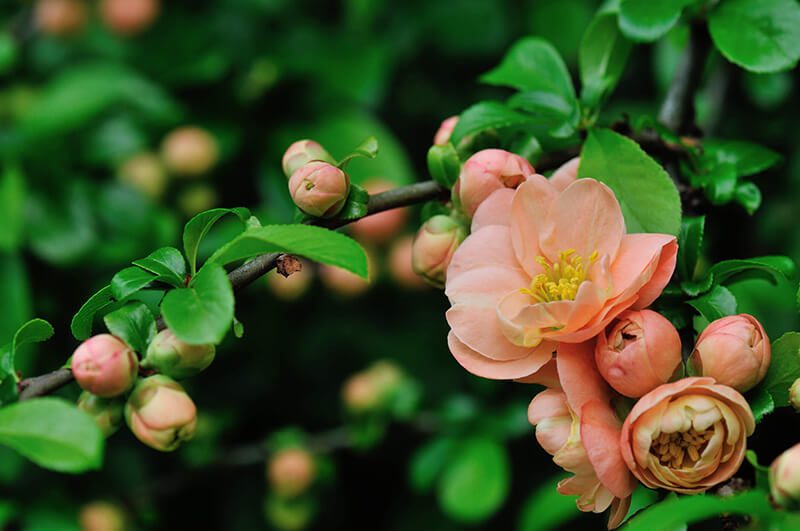
Cameo Flowering Quince is a small shrub that grows about 6 feet high. It has showy pink flowers and needs regular pruning. This shrub is used as hedges and for general garden use.
It grows well in full sun and tolerates dry and moist soil. Its bitter yellow fruit is often used for preserves. This plant will attract birds to your landscape.
Ninebark (Physocarpus opulifolius)
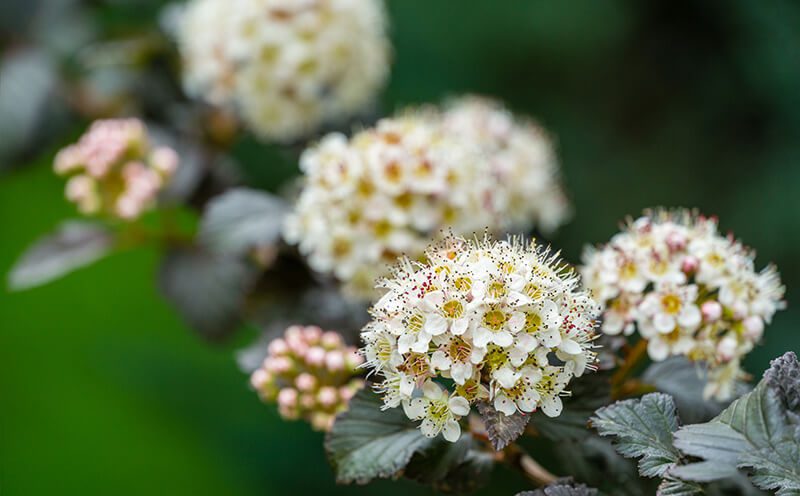
Ninebark can be used to replace invasive Tatarian Honeysuckle (Lonicera tatarica). Ninebark has a lovely spread of arching branches and clumps of small white blossoms. As a bonus, deer generally aren’t interested in it.
Chokeberry (Aronia melanocarpa)
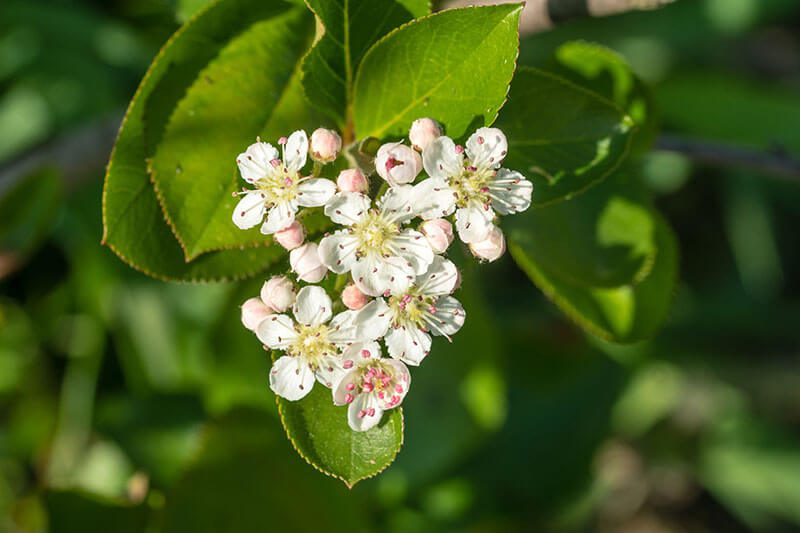
Chokeberry can replace invasive Japanese Barberry (Berberis thunbergii) as a colorful shrub. Chokeberry shrubs fill with white blossoms and have deep reddish-purple berries. Their colors are the most vibrant during fall.
Native Trees and Groundcovers in NJ
Serviceberry (Amelanchier canadensis)

Serviceberry is one of the first trees to bloom in the spring. It offers white to pinkish blossoms and attractive smooth bark. It is an excellent replacement for Bradford or Callery Pear (Pyrus calleryanna).
Calllery Pear trees are often planted by municipalities due to its quick growth and flowering appeal. Unlike Serviceberry trees, Callery Pear trees are considered an invasive species in many places.
Tulip Poplar (Liriodendron tulipifera)
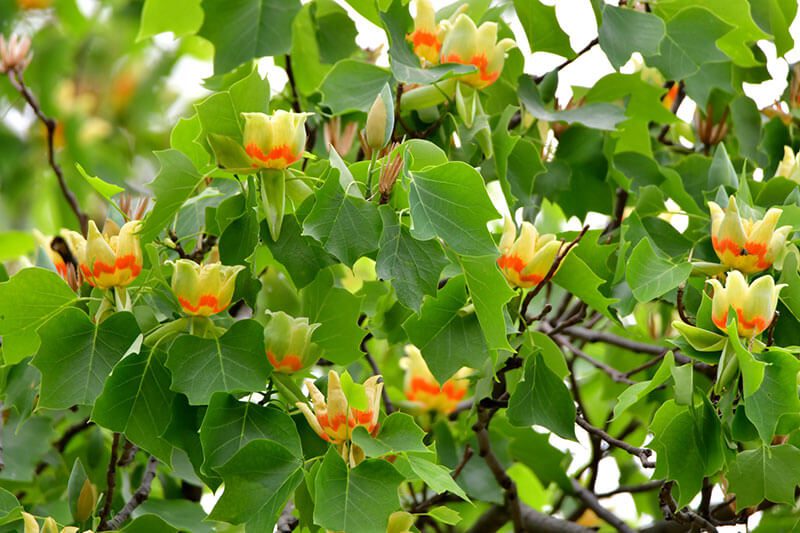
Tulip Poplar is a fast-growing, very straight shade tree. It produces yellow-orange flowers in the spring that are full of nectar. It is a beautiful substitute for the common Norway Maple (Acer platanoides).
Although widespread in the area as a shade tree, Norway maples are not native to New Jersey and can overtake native species, crowding them out.
Violets (Viola spp.)
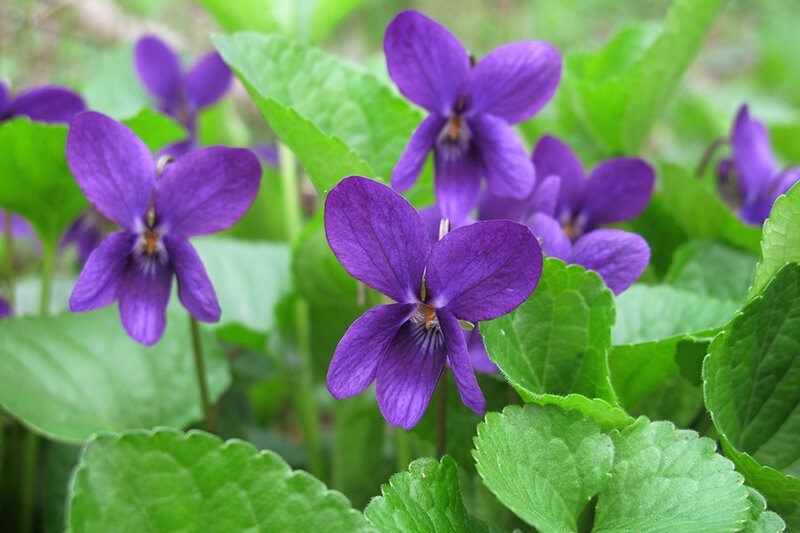
Native violets are a vibrant, colorful addition to your groundcover and can be planted instead of Myrtle or Periwinkle (Vinca minor) which can take over quickly.
Native violets come in a variety of shades of purple as well as white, yellow. They will spread over time and add a burst of spring color.
Bracken Fern (Pteridium aquilinum)
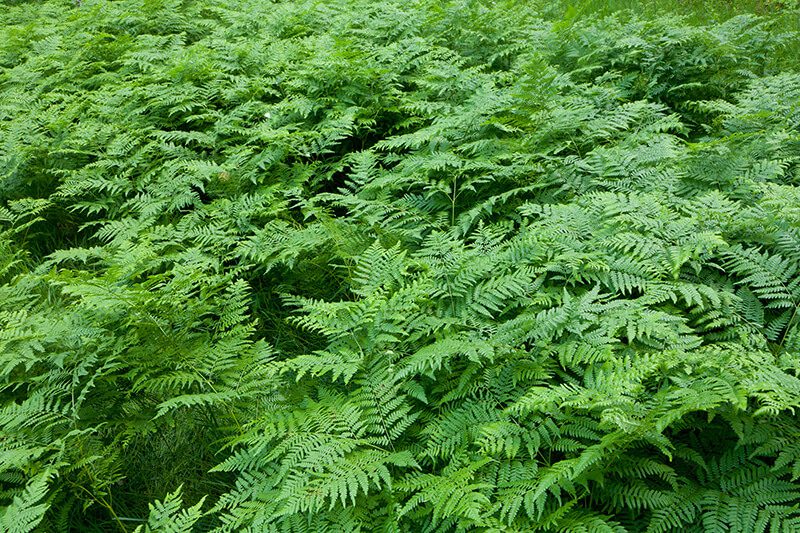
Bracken fern is a native fern that does well in a variety of conditions. It easily can spread to fill in difficult areas from semi-shade to full sun or dry to damp. It’s a great option to consider instead of non-native Chinese Silvergrass (Miscanthus sinensis).
Using New Jersey native plant species in your residential & commercial landscaping offers a variety of looks, from a natural woodland habitat to a more dramatic look with modern lines and everything between.
Careful selection of native plants can give you both the look and function you desire. Native plants species can thrive in the full range of New Jersey spaces, from family gardens to landscape displays.
Landscape Solutions can help you choose native plants species that will fit in well with your existing landscaping or create a ‘new look’.
We will help your find the right native plants in New Jersey to make your residential or commercial property striking and easy to maintain. Contact us today to explore your options.

